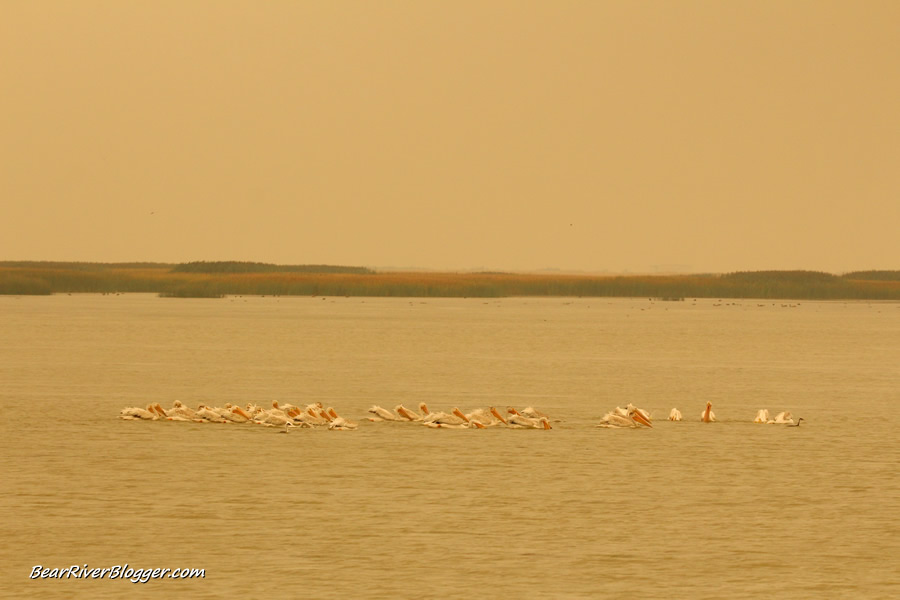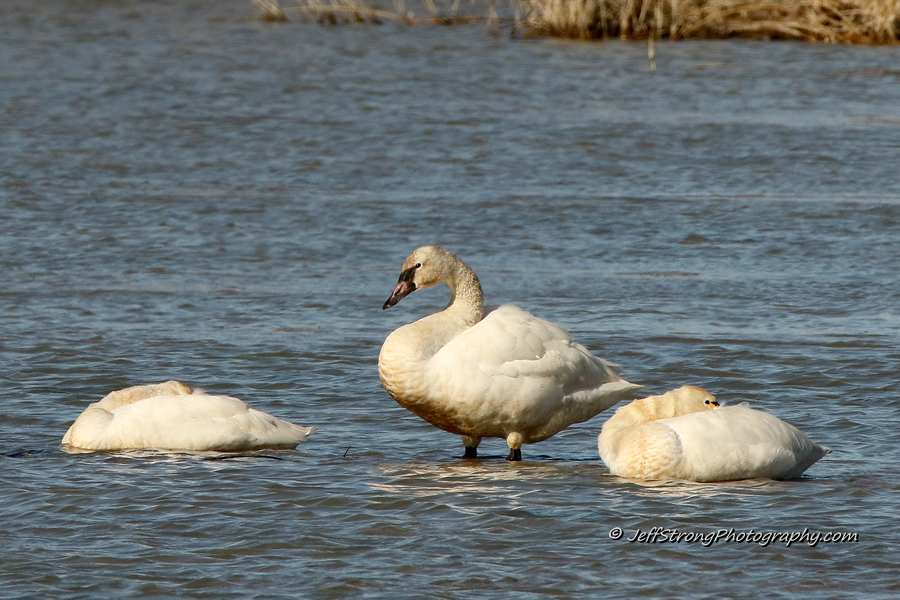A couple of days ago, Friday to be exact, I took a drive out to the Bear River Migratory Bird Refuge auto tour route for a late summer birding excursion.
I have to admit it was one of the most difficult birding trips with regards to photography I have ever experienced, all due to the thick wildfire smoke that suddenly blew in from the north.
Wildfires are burning out here in the western United States and northern Utah is getting a lot of smoke from these devastating fires burning in northern California, Oregon, and Washington when the wind blows from the north.
It made for some rather unusually colored images as you can see from this blog post. The smoke was so thick visibility was reduced to just a few miles and the majestic Wasatch Mountains were completely hidden by the thick overlay of wildfire smoke.
As for the Bear River Bird Refuge, itself, water is still a huge issue on the refuge. The only water on the auto tour route is on the south end, as it has been for most of the summer, in fact.
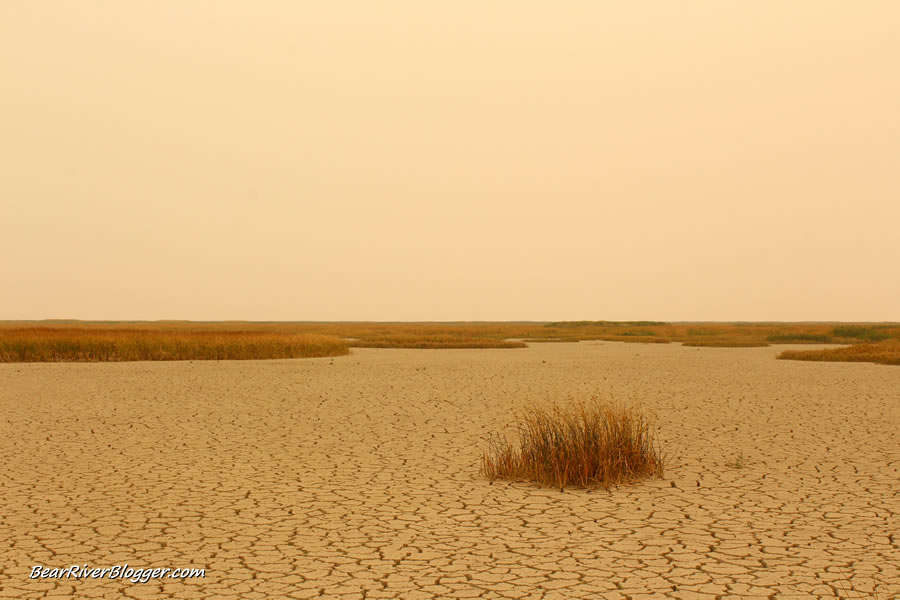
There are birds out on the large impoundment but not as many as in previous years. American white pelicans and great blue herons were some of the most common sightings I had all afternoon.
The species of birds I was able to see despite the lack of water include American white pelican, white-faced ibis, red-winged blackbird, Clark’s grebe, great blue heron, western grebe, northern harrier, turkey vulture, American avocet, black-necked stilt, barn swallow, tree swallow, and a few types of gulls and terns I didn’t identify.
Cows are still present on the refuge and for more information on why they are out there, I wrote a previous blog post regarding the cows and their usage to help control the phragmites on the refuge.
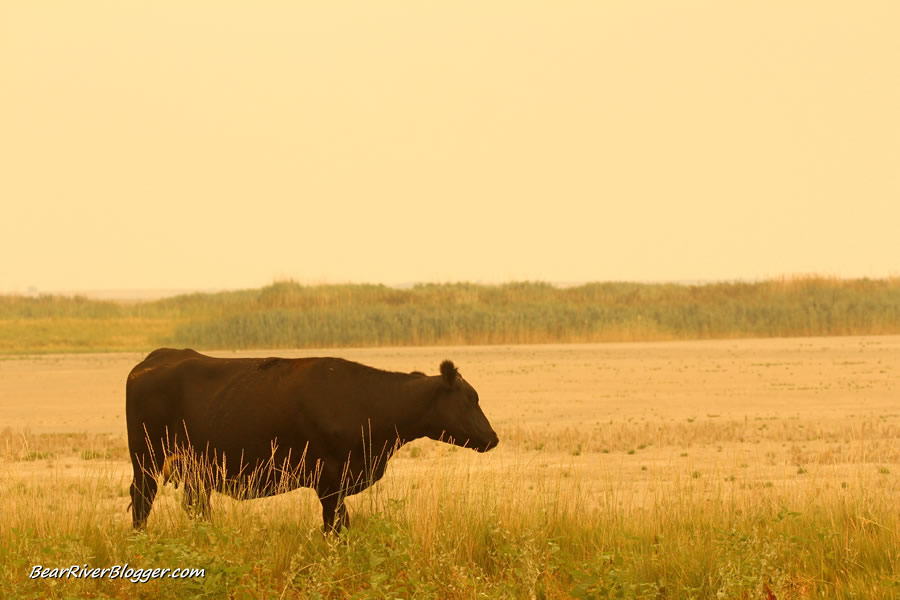
As I was leaving, a solitary muskrat was spotted on the last leg of the auto tour route. Most people give muskrats a bad rap but they are an important part of a wetland ecosystem.
Admittedly, muskrats do dig and cause damage to nearby gravel roads and dikes, sometimes causing problematic sinkholes in the dirt, but man-made dikes and roads are not part of a natural ecosystem so we can’t fault them for that.
Muskrats eat aquatic vegetation and use wetland plants, such as cattails, to build their dens that are oftentimes used as nesting platforms for ducks, geese, and other types of water birds.
By harvesting wetland vegetation, muskrats help keep areas open in the marsh that can overgrow if left unchecked.
Ducks, geese, and shorebirds do need open areas of water to feed and rest and muskrats are an important part of the ecosystem that helps keep wetland plants from overgrowing in a marsh such as the Bear River Bird Refuge.
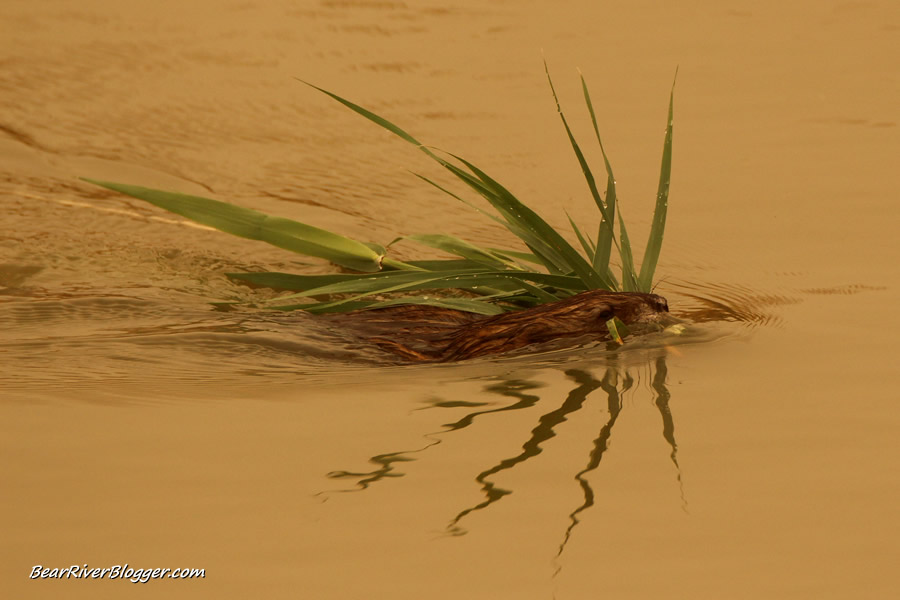
And just like all the rest of the animals in a wetland environment, muskrats are also a food source for hawks and eagles.
I appreciate all the wildlife in nature, regardless if it is an iconic bald eagle hunting a flock of ducks or a quiet muskrat carrying a load of cattails back to the den.
All creatures in nature are important and have their place in our world. And all animals in nature are fascinating as well if we take the time to watch and learn about them, including the ones that get a bad reputation from time to time.
Don’t forget to subscribe to our blog and feel free to share our posts with your nature-loving friends online and elsewhere.
